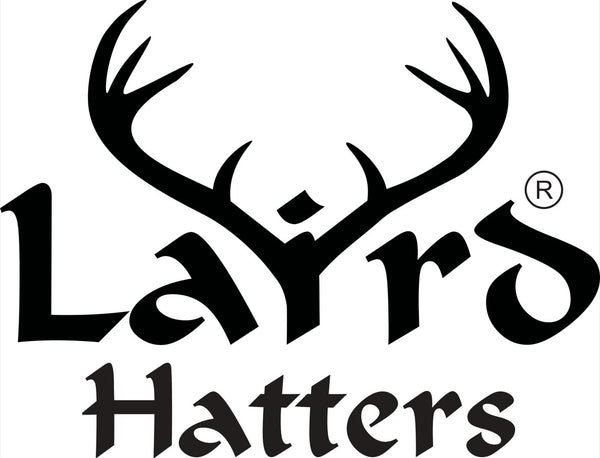
Laird's Soft Spot: The Art of Cashmere Felting
Share
The Luxury of Cashmere Felt
Cashmere is prized for its exceptional softness, warmth, and lightweight feel — qualities that set it apart as one of the finest natural fibres in the world. Its rare composition, luxurious texture, and timeless elegance make it a highly sought-after material for those who value comfort, craftsmanship, and enduring style.
At Laird Hatters, we bring together traditional felting techniques and the finest-grade cashmere to create hats that offer not just luxury, but lasting performance. In this article, we explore the felting process that transforms delicate cashmere fibres into beautifully structured, wearable art.
Cashmere: What's the Big Deal Anyway?
You probably have heard that cashmere is a prized fabric, but do you know exactly why?
Cashmere is derived from the fine, soft undercoat of cashmere goats. Known for its remarkable softness, warmth, and lightness, the fibre has long been associated with luxury. Its name is linked to the Kashmir region in northern India, where the fibre was traditionally produced, although today it is sourced from various regions including Mongolia, China, and Iran, and in Laird's case: Great Britain.
Cashmere goats produce only a small amount of usable fibre each year. On average, a single goat yields just 113 to 170 grams of cashmere annually. This limited supply contributes significantly to the material’s exclusivity and value.
Harvesting cashmere involves combing or gently shearing the goats during the spring moulting season. The process is labour-intensive and requires care and experience to ensure the delicate fibres remain intact.
Cashmere fibres measure approximately 14 to 19 microns in diameter. This is far finer than human hair, which ranges from 20 to 30 microns. This exceptional fineness gives cashmere its silky feel and insulating qualities. Lightweight yet warm, cashmere is ideal for crafting hats that are not only luxurious but also practical, durable, and breathable.
The History and Heritage of Felting
Felting, the process of matting and compressing fibres to form fabric, is one of the oldest textile techniques in human history. Traditionally applied to wool, it is now also used for finer fibres such as rabbit, alpaca, and cashmere.
Felt making is thought to have originated in Central Asia, especially in the regions now known as Mongolia and northern China. Nomadic herders used felt to create garments and shelters, relying on its insulating, weather-resistant, and hard-wearing qualities.
Ancient Egyptians also developed felting techniques. Archaeological finds suggest felted garments were worn as early as 6000 BCE. As trade routes such as the Silk Road emerged, the knowledge of felting spread to Europe and the Middle East, where it became a key part of textile production.
During the Middle Ages, felted wool was an essential material in northern Europe, particularly in colder regions where flax and cotton were difficult to grow. In England, the production of felted hats truly accelerated in the 16th century when a law was passed requiring all non-nobles to wear woollen hats — a move aimed at supporting the domestic wool industry, then the cornerstone of the British economy. The symbolism of this legacy endures; the ‘Woolpack’ remains on display in the House of Commons to this day.
How Cashmere Felt Hats Are Made
The process of felting cashmere shares similarities with that of wool or rabbit felt, though it requires particular delicacy due to the softness of the fibre.
Cashmere fibres are first laid out in thin, even layers to form a flat piece of cloth roughly the size of a hat capeline. The fibres are arranged in alternating directions to ensure a stable structure, then wetted and soaped to help lubricate and bind them together.
Through rolling, compression, and agitation, the fibres begin to matt, creating a dense but supple felt. This process takes time, patience, and an expert eye, particularly when working with such fine material.
To begin shaping a hat, the felt is formed into a cone — a preparatory shape known as a capeline. This allows for easier blocking and moulding later on. Blocking a hat is a traditional skill in itself. The felt is stretched over a wooden hat block using steam, pressure, and experienced hands. Each step must be precise, ensuring the final piece has a refined finish and comfortable fit.
Why Choose Cashmere Felt Hats from Laird?

At Laird Hatters, we take great pride in working with heritage techniques and natural materials. Our cashmere felt hats combine centuries-old craftsmanship with modern style and attention to detail. The result is headwear that feels luxurious to the touch, performs well in all seasons, and holds its shape and elegance for years to come.
Each hat is made by hand, blocked and finished in England using the best available materials. With proper care, a Laird cashmere felt hat becomes not just a wardrobe staple but a lasting investment in quality and British craftsmanship.

